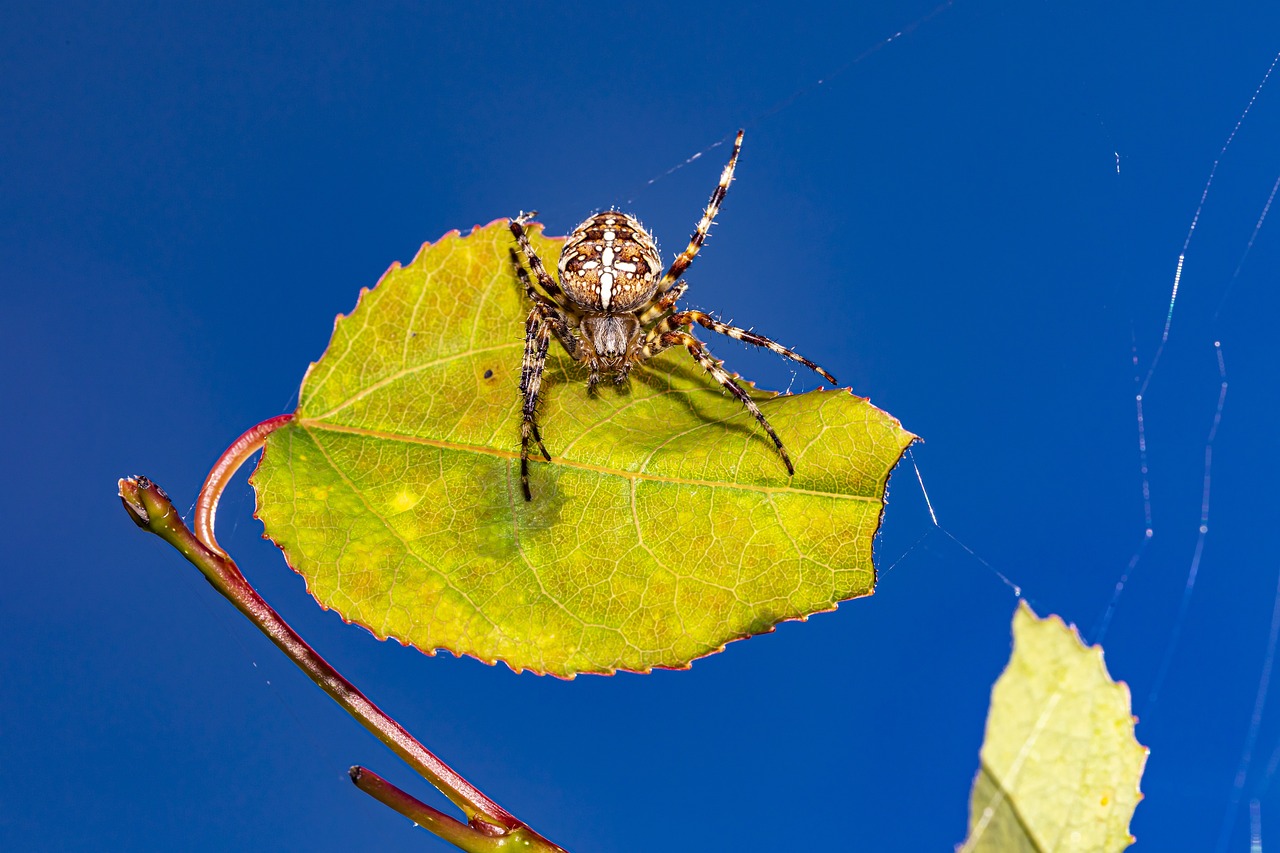Here’s a complete overview of the European Garden Spider (Araneus diadematus):
🕸️ European Garden Spider (Araneus diadematus)
Taxonomy:
- Order: Araneae
- Family: Araneidae (Orb-weaver Spiders)
- Genus: Araneus
- Species: Araneus diadematus
🕷️ Identification
The European Garden Spider, also called the Cross Orb-weaver, is one of the most familiar and widespread spiders in Europe. It is easily recognized by the distinctive white cross-shaped markings on its abdomen, which give it its name.
The body coloration varies from pale beige to dark brown or orange, depending on age and environment. Females are considerably larger (up to 18 mm) than males (around 8–10 mm).
🌿 Habitat and Distribution
Araneus diadematus is found throughout Europe, North America, and parts of Asia. It thrives in gardens, woodland edges, meadows, and urban green spaces — essentially anywhere suitable structures exist to anchor its orb web.
The species prefers humid and sheltered habitats but can adapt to a wide variety of microclimates.
🕸️ Web and Hunting Behavior
This species is a classic orb-weaver, constructing a symmetrical spiral web that can reach 40 cm across. The spider typically sits head down in the web’s center, waiting for flying insects like flies, bees, or moths to become ensnared.
When prey hits the web, the spider rushes over, immobilizes it with silk, and injects venom to liquefy internal tissues for digestion.
The web is often rebuilt daily, with the spider consuming the old silk each morning before spinning anew at dusk — a remarkable example of recycling in nature.
🕷️ Life Cycle
- Spring: Spiderlings hatch and disperse by ballooning (floating on silk threads).
- Summer: Rapid growth through several molts.
- Autumn: Adults reach full size and reproduce.
- Winter: Most die off after egg-laying; only eggs overwinter to continue the cycle.
Females create a silken egg sac attached to vegetation or sheltered spots, containing hundreds of eggs.
⚙️ Special Adaptations
- Highly sensitive web vibrations allow precise prey detection.
- Sticky spiral silk captures prey efficiently yet resists breakage.
- Venom is potent enough for insects but harmless to humans.
🌍 Ecological Role
The European Garden Spider is a key natural pest controller, consuming vast numbers of flying insects. Its orb webs also serve as a microhabitat for smaller organisms.
Because of its abundance and visibility, it’s often used in ecology education and behavioral research.
📏 Key Facts
- Body length: Female 10–18 mm, Male 8–10 mm
- Color: Brown, orange, or beige with white cross pattern
- Web type: Orb web
- Range: Europe, North America, parts of Asia
- Active period: Late summer to autumn
Views: 1088
Subscribe to the newsletter:
